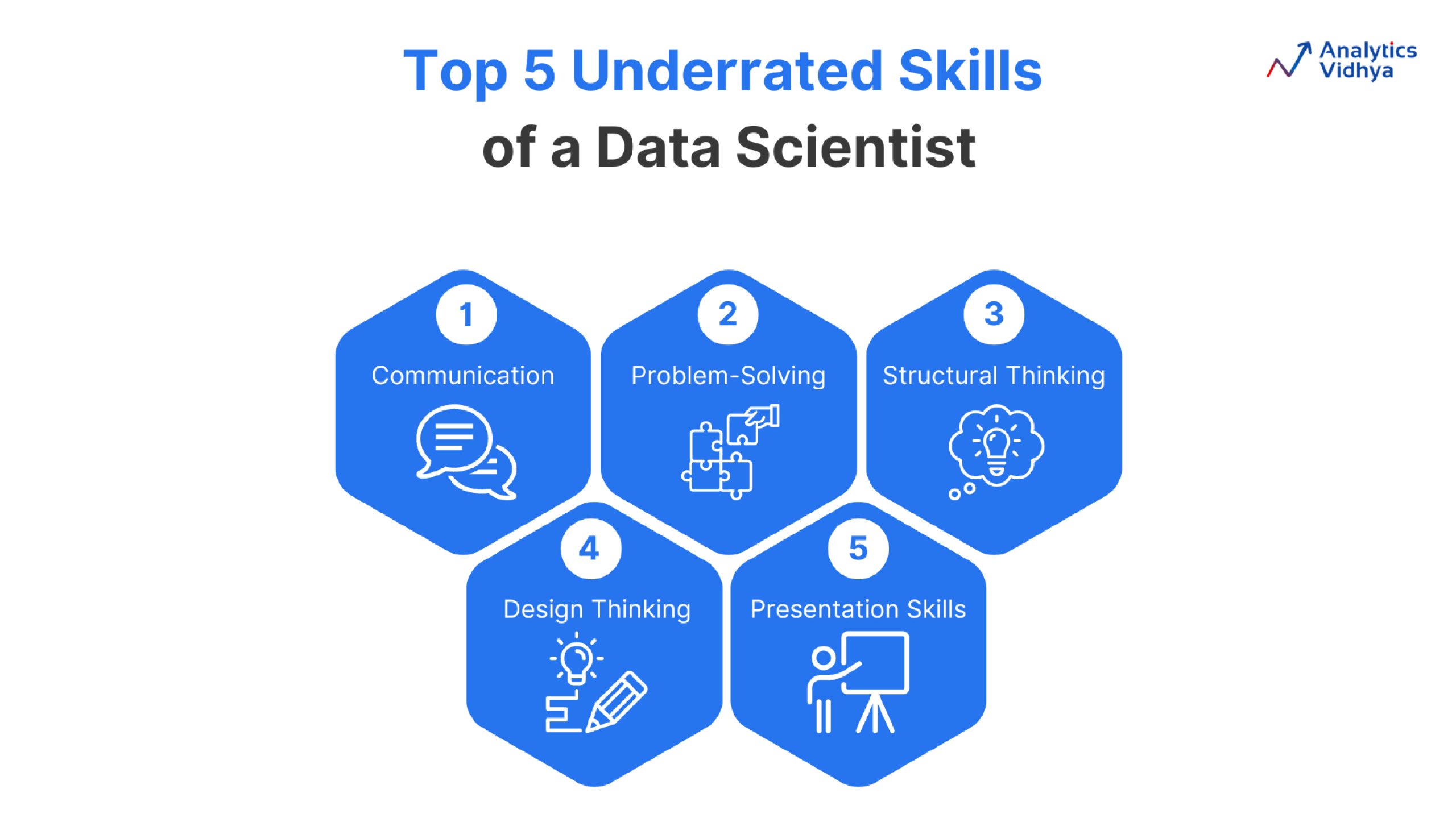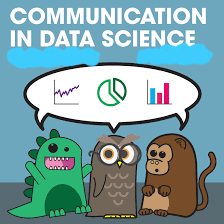Data science has become increasingly important in today’s digital age, with organizations relying on data scientists to extract valuable insights from vast information. While technical skills are often emphasized in the field, several underrated skills can set data scientists apart. This article will explore these skills and their significance in data science.
Looking to start your career in data science? Here is the perfect learning path to become a data scientist in 2024.

Table of contents
Growing Importance of Data Scientists

Data scientists play a crucial role in helping organizations make data-driven decisions. Their expertise in analyzing complex datasets and extracting meaningful insights is invaluable in today’s data-driven world. As the demand for data scientists continues to rise, it is essential to understand the skills that can make them stand out in the field.
Overview of Underrated Skills in Data Science
While technical skills such as programming and statistical analysis are essential for data scientists, other skills are often overlooked but equally important. These underrated skills include communication skills, problem-solving skills, structural thinking, design thinking, and PowerPoint presentation skills. Let’s delve into these skills and explore their significance in data science.
Role of Communication in Data Science

Effective communication is vital for data scientists as it allows them to convey complex findings and insights to non-technical stakeholders. Three critical aspects of communication skills in data science are effective data visualization, storytelling with data, and collaborative communication.
- Effective Data Visualization: Data visualization is the art of presenting data in a visually appealing and informative manner. Data scientists can effectively communicate complex information to various audiences by creating clear and concise visual representations of data.
- Storytelling with Data: Storytelling with data involves using narratives and compelling visuals to convey insights and findings. By framing data analysis within a storytelling context, data scientists can engage and captivate their audience, making the information more memorable and impactful.
- Collaborative Communication: Collaborative communication is effectively communicating and collaborating with team members and stakeholders. By fostering open and transparent communication, data scientists can ensure everyone is on the same page and working towards a common goal.
Problem-Solving Skills in Data Science

Problem-solving is at the core of data science, and data scientists must possess strong problem-solving skills to tackle complex challenges. Three fundamental approaches to problem-solving in data science are critical thinking, analytical skills, and creativity.
- Critical Thinking: Critical thinking involves analyzing and evaluating information to make informed decisions. Data scientists must be able to think critically to identify patterns, uncover insights, and make data-driven recommendations.
- Analytical Skills: Analytical skills are essential for data scientists to analyze and interpret data effectively. These skills include data cleaning, preprocessing, statistical analysis, and machine learning techniques.
- Creativity in Problem-Solving: Creativity is crucial in problem-solving, as data scientists must think outside the box to find innovative solutions. By approaching problems creatively, data scientists can uncover unique insights and make breakthrough discoveries.
Understanding Structural Thinking in Data Science

Structural thinking involves understanding the underlying frameworks and models that govern data science. Three critical aspects of structural thinking in data science are logical frameworks and models, systems thinking, and data architecture and design.
- Logical Frameworks and Models: Logical frameworks and models provide a structured approach to data analysis and decision-making. Using logical frameworks and models, data scientists can organize and structure their analysis, making it easier to derive meaningful insights.
- Systems Thinking: Systems thinking involves understanding the interconnectedness of various components within a system. In data science, systems thinking allows data scientists to consider the broader context and implications of their analysis, leading to more comprehensive and impactful insights.
- Data Architecture and Design: Data architecture and design involve designing and implementing data structures and systems that support efficient data analysis. By understanding data architecture and design principles, data scientists can optimize their workflows and enhance the efficiency of their analysis.
Introduction to Design Thinking in Data Science

Design thinking is a user-centric approach to problem-solving that emphasizes empathy, iteration, and collaboration. In data science, design thinking can be applied to enhance the usability and impact of data-driven solutions. Three critical aspects of design thinking in data science are a user-centric approach, iterative prototyping, and human-centered design.
- User-Centric Approach: A user-centric approach involves understanding the needs and preferences of end-users when designing data-driven solutions. Data scientists can create intuitive, user-friendly solutions and address real-world problems by putting the user at the center of the design process.
- Iterative Prototyping: Iterative prototyping involves continuously refining and improving data-driven solutions through feedback and iteration. Data scientists can iterate and refine their solutions by creating prototypes and gathering user feedback, ensuring they effectively meet end-users’ needs.
- Human-Centered Design: Human-centered design focuses on designing solutions that prioritize the needs and experiences of humans. In data science, human-centered design involves considering the ethical implications of data analysis and ensuring that data-driven solutions are fair, unbiased, and respectful of individual privacy.
Importance of PowerPoint Presentation Skills in Data Science

PowerPoint presentation skills are often overlooked but crucial for data scientists to effectively communicate their findings and insights. Three critical aspects of PowerPoint presentation skills in data science are visual communication, effective slide design, and engaging presentations.
- Visual Communication: Visual communication involves using visuals, such as charts, graphs, and infographics, to convey information effectively. By incorporating visual elements into their presentations, data scientists can make complex information more accessible and engaging for their audience.
- Effective Slide Design: Effective slide design involves creating visually appealing and well-structured slides that support the presentation’s narrative. Data scientists can ensure their presentations are easy to follow and understand by using clear headings, bullet points, and relevant visuals.
- Engaging Presentations: Presentations captivate the audience’s attention and leave a lasting impression. Data scientists can make their presentations more engaging by incorporating storytelling techniques, interactive elements, and real-world examples.
Also Read: Step-by-Step Guide to Become a Data Scientist in 2024
Conclusion
While technical skills are essential for data scientists, it is crucial to recognize the underrated skills that can set them apart in the field. Communication skills, problem-solving skills, structural thinking, design thinking, and PowerPoint presentation skills are all valuable assets that can enhance the effectiveness and impact of data scientists’ work. By honing these skills, data scientists can become well-rounded professionals who can effectively communicate insights, solve complex problems, and drive data-driven decision-making in organizations.




